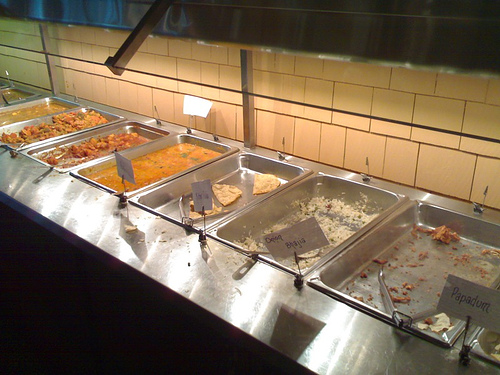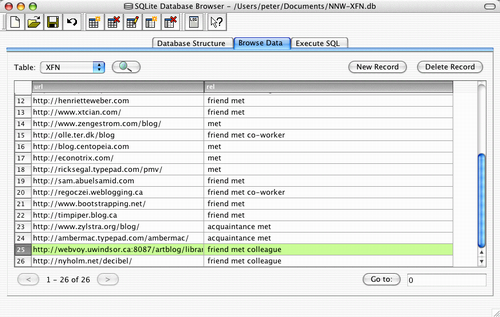In a surprising turn of events, after first revealing that it owed the maker of the ill-fated parking kiosks $200,000, the City of Charlottetown admitted that the city coffers are now completely empty, and the ownership of Charlottetown now rests with ParkSmart.
“We really had no choice — we’re broke,” said Public Works Committee chair Stu MacFadyen when asked about the strange turn of events. “We realized that the only responsible course was to turn over ownership of the City to ParkSmart so that we can meet our obligations to them.”
It’s unclear whether the kiosks will remain in place under this new arrangement.
The Interactive Charlottetown Transit Map has now been updated to include the new routes and schedules for routes 1, 2, 3 and 4. Update for route 5 to follow shortly.
Here’s my friend Stephen Regoczei quoted in a 1997 issue of Arthur (from the Internet Archive; original no longer online), the Trent University student newspaper, on New Technology Guru (and Trent alumnus) Don Tapscott:
Prof. Stephen Regoczei of Trent’s computer studies department has studied Tapscott’s work for 18 years. Regoczei says, “Tapscott specializes in technology boosterism. What he predicts is radical change. His predictions have been 100% wrong. While he’s predicting, he’s selling a lot of computer technology… He works for the vendors [such as Digital, IBM, SUN and Microsoft.]”
Tapscott consults for some of the largest information technology corporations in the world. Says Prof. Regoczei, “Its the same old story. The rich get richer, the poor get poorer. He’s an advertiser more than a credible futurist.”
I’d been pinning my hopes for a future life in Europe on the faint notion that I might somehow acquire Croatian citizenship by virtue of the fact that my grandfather was born there (or at least in some earlier version of “there”). Then, when Croatia gets admitted to the EU (which, of course, is not a done deal), I’d be in.
Alas, at least according to this consular information sheet, I’m too far out of the loop to qualify.
Given that the three other points of my genetic compass all go back at least one more generation in Canada, I think hanging my hat on the ancestral claim to European citizenship notion isn’t exactly solid.
Time to fall back on Plan B — getting PEI admitted to the European Union.
Dan, Steven, Isaac, MikeG and I went out to lunch at Royal Tandoor for this first time this afternoon.
The whole place is looking a lot better than it did in its former incarnation as Forbidden Palace: there’s a new paint job, new counters and new china.
Although there are promises of a menu at a later date, right now they’re operating in a “buffet only” mode, which seems to be a good approach for a non-Indian-food-aware market. The buffet is set up along one wall of the restaurant, near the back, and consists of a series of cold dishes followed by a series of hot ones:

There was surprising variety in the offerings: chutney, salads, poppadoms, dal, a nice potato dish, etc. They lean heavily to the vegetarian side; of all the dishes on offer, only 3 contained meat. The food had a much stronger kick that the food at former Taj Mahal restaurant next door; it won’t burn your heart out, but it’s not the usual “tamed down for the Island palate” you usually find. That’s nice. Isaac pointed out that there was, in fact, nothing actually made in a tandoor oven on offer.
Although the buffet style doesn’t involve a lot of service per se we were well served by various water refillers and plate take-awayers. They only took cash for payment today; I suspect this is a temporary glitch.
The place was packed today, with everyone from Lobie Daughton to regular people; this certainly bodes well for a healthy future (although they did have a flyer in The Guardian last week, which is probably artificially inflating their early numbers).
It will be interesting to see how things develop from here; ideally they’ll leave the buffet in place for lunch (at $7.99 you can’t beat the value) and mature into a slightly more formal arrangement for supper.
Dan reminded me at lunch today that I have yet to update the Interactive Charlottetown Bus Map for the schedule and route changes that took effect on June 12. I took a stab at starting the update tonight, and got as far as getting routes #2 and #3 completed. The job involves a lot of typing (of schedule data) and fiddling (with map data because of minor route changes), so it takes longer than you would think. Although there was some procrastination involved in there too. I’ll aim to have the rest of the routes done by the end of the week.
It seemed only logical to me that NetNewsWire, where I keep my “whose feeds am I subscribed to” information, should somehow be able to relate to XFN — the “XHTML Friends Network,” the self-described “simple way to represent human relationships using hyperlinks.”
Because NetNewsWire lacks any mechanism for storing XFN information itself, I crafted an AppleScript-based solution that stores my relationship to each feed’s author in a SQLite database. You can download my Define XFN Relationship script and try it for yourself. Here’s how:
- Download the NetNewsWire-XFN.scpt file, rename it to something handy like “Define XFN Relationship” and move it to ~/Library/Application Support/NetNewsWire/Scripts — the directory where NetNewsWire scripts are stored.
- Edit the script and change the variable databasename to a location on your own machine (it’s hard-coded to a location on my machine right now; yes, this could be more elegant).
- Select a feed in NetNewsWire and select the “Define XFN Relationship” script from the Scripts menu.
- Select the XFN relationship(s) you have to the author of the feed you’ve selected — this brief introduction and this detailed background should get you started on what means what. Yes, the user interface is ugly.
- Click OK.
- Rinse and repeat.
Here’s what it looks like in operation — I’m defining Art Rhyno as a friend and colleague who I’ve met:
First, I select Art’s feed in NetNewsWire…

Next I select the “Define XFN Relationsip” from the Scripts menu…

And finally I select the reltionships that I have with Art:

Right now I haven’t created anything that actually does anything with the data — the logical next step would be to write a companion script that outputs a blogroll file with the XFN relationships coded as described here. I’ll do that soon. In the meantime, you can use the handy SQLite Database Browser to look at the database file you’ve created:


 I am
I am